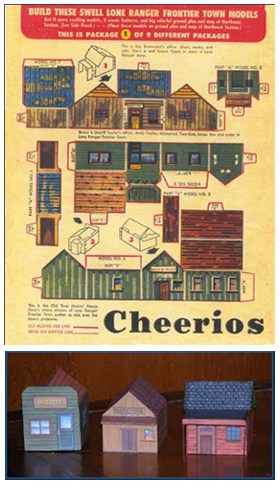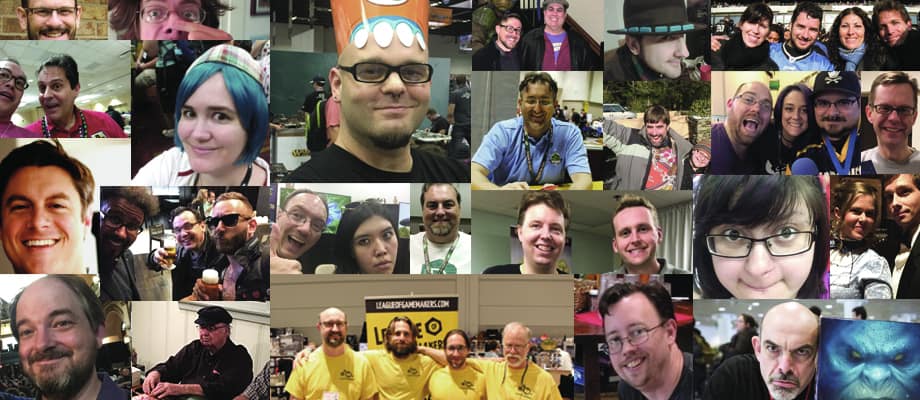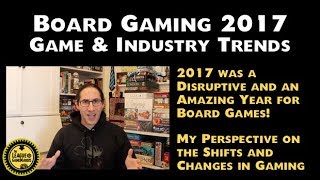
 Pics from Fiddersgreen.net
Pics from Fiddersgreen.netTHE ADVENTURE BEGINS
As a young boy I would rush home from school and settled in next to the floor model radio console to listen to the latest adventures of Hop Herrigan, the All American Boy, Terry and the Pirates, Jack Armstrong and of course, The Lone Ranger.
The adventures would not end there because for a box top from Cheerios and ten cents you could get each of four map sections of a western town. Cheerios produced a line of nine Frontier Town cereal boxes with town buildings on their backs to cut out and assemble to bring your town alive.*
I don’t really remember too many details but I think it was mostly a sandbox type of game play. What I do remember is it welcomed me into the world of tabletop gaming beyond Monopoly.
DEEPER STRATEGY AND DESIGNING
Moving forwards several years in our literary time machine to 1959 when I came out of the US Air Force, I became an ardent possessor and player of 3M Bookshelf, Gamette and Flatbox games. These strategy games move my gaming forward from the main stream family games up to the more hard core games. I had obtained and played regularly about twenty 3M and some Avalon Hill games of the bookshelf genre.
To this day, between my son’s game shelf and mine, we have several of these; however, we don’t play
them as often.
About this same time, I started designing and making playable prototypes of original designs, not mods of existing games. At that time I thought of Parker Bros. & Milton Bradley as the only outlet for games and they weren’t accepting outside, unsolicited game designs.
FAMILY DUNGEONING
Moving a little more forward to late 60’s I had gotten married and had a son. Even before he was old enough I got him into playing games. At one point we got involved with miniatures gaming. We had a modest collection of miniatures which we hand painted. Due to budget constraints, our cadre of soldiers was a mix of Roman and Medieval. One of my favorite miniatures was a warrior elephant which was three to four times larger than the others.
During that same period of time we played early D&D at Cal Tech in Pasadena. After getting my feet wet at Cal Tech I tried my hand at creating fantasy worlds and scenarios as a Dungeon Master. We also started attending some gaming conventions. One that stands out in my memory was held at Cal State Northridge. A game that we played at the convention and at home as a family was the Avalon Hill King Maker.
THE PATH TO VIDEO GAMES
One early game design concept which has stuck with me and has seen different versions and media types is fighting wildfires. During this period of designing many games but lacking the experience and direction to carry it through to a published game, my son showed me some computer code in Basic which he wrote. It just looked like simple phrases in plain English and I could not see how it would make a computer do what you wanted it to do. However, since I wanted to be able to share with my son I started looking into programming in Basic. I got hooked; and so, started my journey down the lane of the Atari 600 which had a mere 48K of memory to work with. The Atari experience was a good one for a self-taught programmer because at that time most programmers were self-taught. It was a time when it was not unusual for a game to be the work of one man. Due to the limited memory and lack of on board data storage, a programmer had to be very disciplined in their code often having to manipulate a byte’s individual bits. The graphics in a game was produced by code not image files.
IN PART II…
…I’ll journey on down the path of video game productions, experience with Electronic Arts, Avalon Hill, Talonsoft, Take Two and transitioning back to board games.
UPDATE: Read Part 2!








